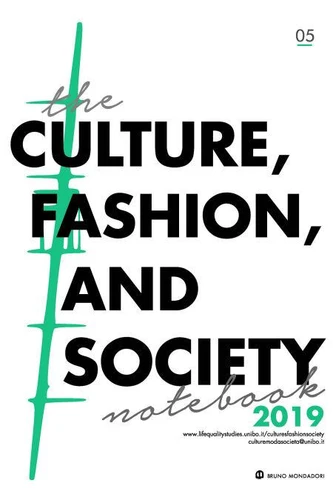'Space oddity': What Fashion Terms Can Reveal About English and Italian Cognitive Systems
Par : ,Formats :
Disponible dans votre compte client Decitre ou Furet du Nord dès validation de votre commande. Le format PDF est :
- Compatible avec une lecture sur My Vivlio (smartphone, tablette, ordinateur)
- Compatible avec une lecture sur liseuses Vivlio
- Pour les liseuses autres que Vivlio, vous devez utiliser le logiciel Adobe Digital Edition. Non compatible avec la lecture sur les liseuses Kindle, Remarkable et Sony
 , qui est-ce ?
, qui est-ce ?Notre partenaire de plateforme de lecture numérique où vous retrouverez l'ensemble de vos ebooks gratuitement
Pour en savoir plus sur nos ebooks, consultez notre aide en ligne ici
- FormatPDF
- ISBN978-88-6774-343-8
- EAN9788867743438
- Date de parution23/12/2019
- Protection num.Digital Watermarking
- Taille3 Mo
- Infos supplémentairespdf
- ÉditeurBruno Mondadori
Résumé
This article aims to explore cognitive and cultural differences through
a contrastive analysis of English and Italian fashion terms. The analysis
places the focus on English nominal compounds that exhibit a location-
located semantic structure [e.g. E. Capri trousers (It. pantaloni
Capri); E. beach dress (It. copricostume), E. topcoat (It. soprabito),
E. college heel (It. tacco college)] and their correspondent forms in
Italian.
Data extracted from three fashion dictionaries (Lorusso 2017;
Canonica-Sawina 1994; Tortora & Keiser 2014) reveal that locative
nominal compounds are far more frequent in English than in Italian,
and that, therefore, different cognitive schemas (and morphotactic
means) are used in the two languages to conceptualise the same entity.
Since fashion spatial compounds are mostly metonymy and/or
metaphor-based, data are analysed within a Cognitive Linguistic
framework, i.e.
by means of conceptual metaphor theory (Lakoff & Johnson 1980) and metonymy theory (Radden & Kövecses 1999).
by means of conceptual metaphor theory (Lakoff & Johnson 1980) and metonymy theory (Radden & Kövecses 1999).
This article aims to explore cognitive and cultural differences through
a contrastive analysis of English and Italian fashion terms. The analysis
places the focus on English nominal compounds that exhibit a location-
located semantic structure [e.g. E. Capri trousers (It. pantaloni
Capri); E. beach dress (It. copricostume), E. topcoat (It. soprabito),
E. college heel (It. tacco college)] and their correspondent forms in
Italian.
Data extracted from three fashion dictionaries (Lorusso 2017;
Canonica-Sawina 1994; Tortora & Keiser 2014) reveal that locative
nominal compounds are far more frequent in English than in Italian,
and that, therefore, different cognitive schemas (and morphotactic
means) are used in the two languages to conceptualise the same entity.
Since fashion spatial compounds are mostly metonymy and/or
metaphor-based, data are analysed within a Cognitive Linguistic
framework, i.e.
by means of conceptual metaphor theory (Lakoff & Johnson 1980) and metonymy theory (Radden & Kövecses 1999).
by means of conceptual metaphor theory (Lakoff & Johnson 1980) and metonymy theory (Radden & Kövecses 1999).




